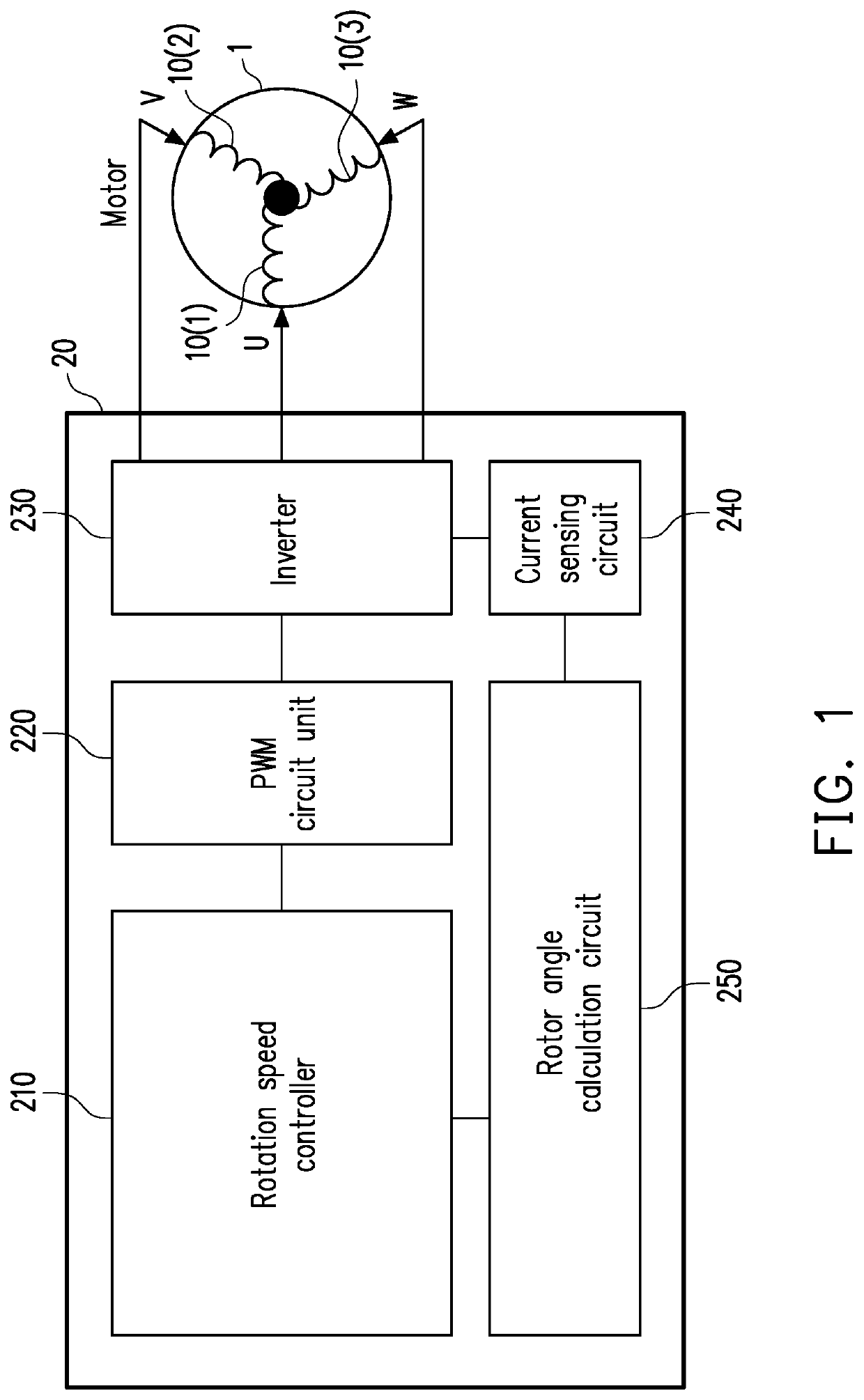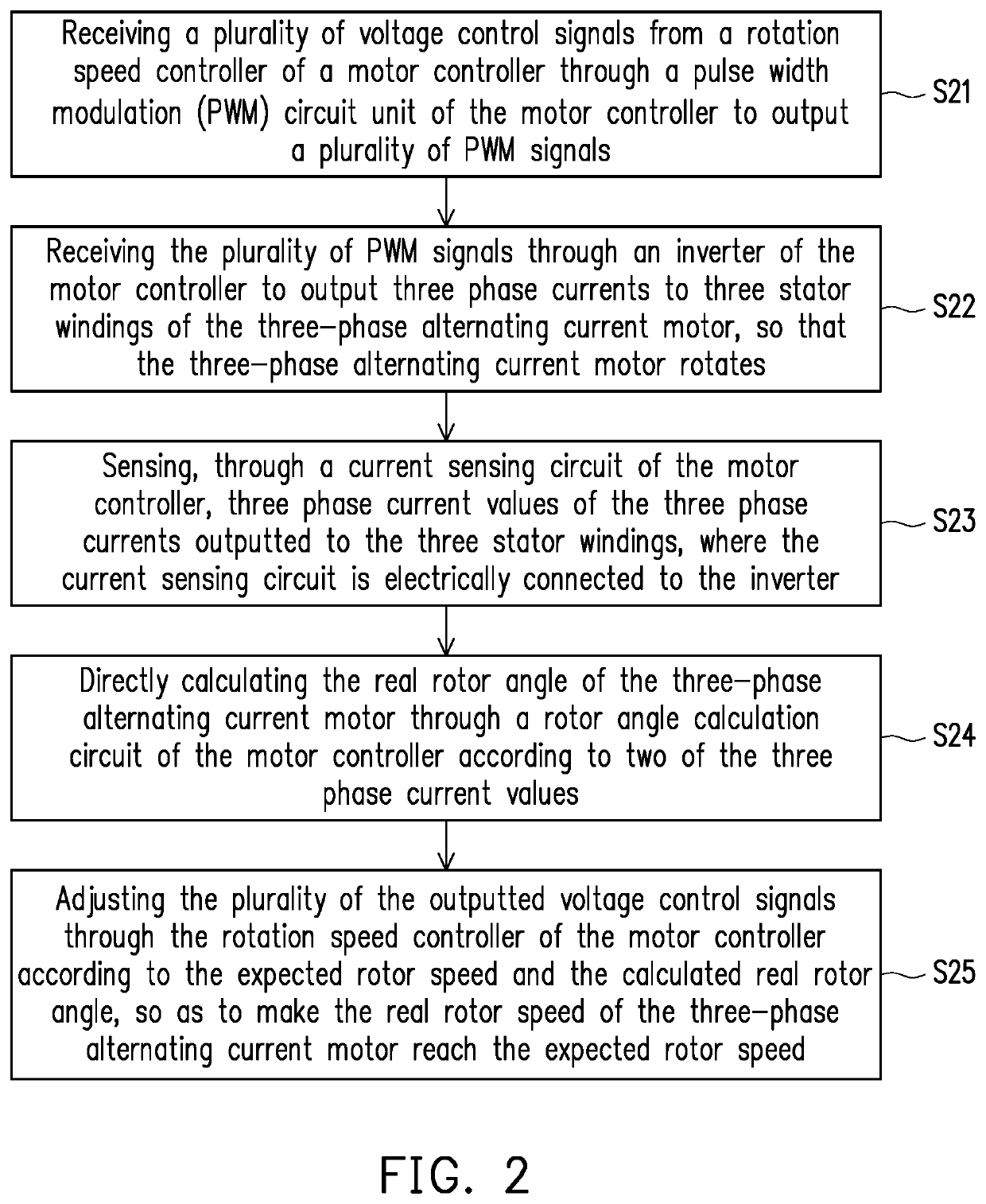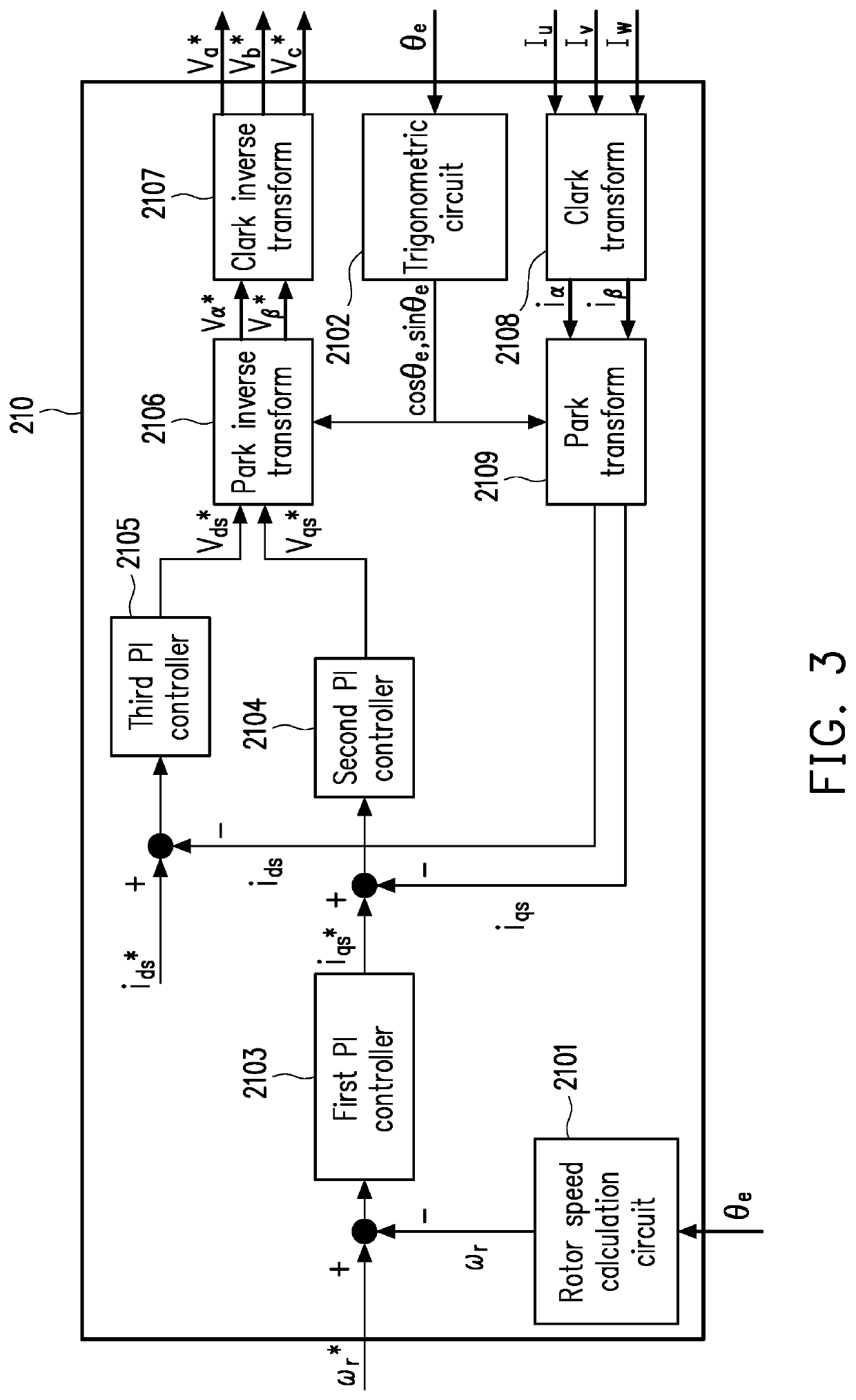Motor controller and motor control method
- Summary
- Abstract
- Description
- Claims
- Application Information
AI Technical Summary
Benefits of technology
Problems solved by technology
Method used
Image
Examples
embodiment 1
[0022]FIG. 1 is a schematic block diagram of a motor controller according to Embodiment 1 of the invention. Referring to FIG. 1, in the present embodiment, a motor controller 20 is electrically connected to a motor 1 and is configured to control the motor 1. The motor controller 20 includes a rotation speed controller 210, a pulse width modulation (PWM) circuit unit 220, an inverter (also referred to as a converter) 230, a current sensing circuit 240, and a rotor angle calculation circuit 250. The motor 1 includes stator windings 10(1)-10(3), the stator windings 10(1)-10(3) receiving three phase currents U, V, and W outputted by the motor controller 20 to change a magnetic field vector of the motor 1, so that a rotor of the motor 1 rotates. It should be noted that, in the present embodiment, the motor 1 is a three-phase alternating current motor, and neither of the motor 1 and the motor controller 210 has a rotor angle sensor / rotor address sensor that is configured to directly sense...
embodiment 2
[0054]A difference between Embodiment 2 and Embodiment 1 lies in an implementation of the rotor angle calculation circuit 250. Other hardware elements are the same as those of Embodiment 1, and therefore the descriptions thereof are omitted herein.
[0055]In particular, the rotor angle calculation algorithm implemented on the rotor angle calculation circuit 250 in Embodiment 2 defines relationships between three phase current values Iu, Iv, and Iw and the real rotor angle θe through the following formulas (2-1), (2-2), and (2-3):
Iu=sinθe,(2-1)Iv=sin(θe+120)=sinθecos120+cosθesin120=-12sinθe+32cosθe,and(2-2)Iw=sin(θe+240)=sinθecos240+cosθesin240=-12sinθe-32cosθe.(2-3)
[0056]θe is the real rotor angle with a unit of degree; Iu is the U-phase current value, Iv is the V-phase current value, and Iw is the W-phase current value with a unit of ampere (A).
[0057]Similarly, with the relationships defined above, a formula for calculating the real rotor angle θe may be derived using two of the thre...
embodiment 3
[0064]A difference between Embodiment 3 and Embodiment 1 lies in an implementation of the rotor angle calculation circuit 250. Other hardware elements are the same as those of Embodiment 1, and therefore the descriptions thereof are omitted herein.
[0065]In particular, the rotor angle calculation algorithm implemented on the rotor angle calculation circuit 250 in Embodiment 3 defines relationships between the three phase current values Iu, Iv, and Iw and the real rotor angle Be through the following formulas (3-1), (3-2), (3-3):
Iu=cosθe,(3-1)Iv=cos(θe-120)=cosθecos120+sinθesin120=-12cosθe+32sinθe,and(3-2)Iw=cos(θe-240)=cosθecos240+sinθesin240=-12cosθe-32sinθe.(3-3)
[0066]θe is the real rotor angle with a unit of degree; Iu is the U-phase current value, Iv is the V-phase current value, and Iw is the W-phase current value with a unit of ampere (A).
[0067]Similarly, with the relationships defined above, a formula for calculating the real rotor angle θe may be derived using two of the thre...
PUM
 Login to View More
Login to View More Abstract
Description
Claims
Application Information
 Login to View More
Login to View More - R&D
- Intellectual Property
- Life Sciences
- Materials
- Tech Scout
- Unparalleled Data Quality
- Higher Quality Content
- 60% Fewer Hallucinations
Browse by: Latest US Patents, China's latest patents, Technical Efficacy Thesaurus, Application Domain, Technology Topic, Popular Technical Reports.
© 2025 PatSnap. All rights reserved.Legal|Privacy policy|Modern Slavery Act Transparency Statement|Sitemap|About US| Contact US: help@patsnap.com



